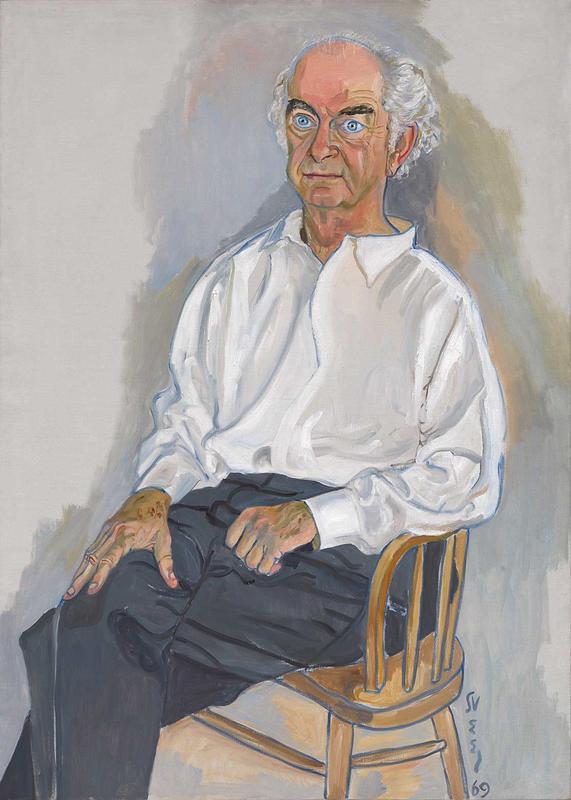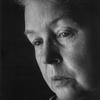More about Linus Pauling

Contributor
This portrait of Linus Pauling by Alice Neel makes him look like a mad scientist, which is appropriate, because that’s exactly what Pauling was.
Linus Pauling was born in Portland, Oregon in 1901. His love of science started as a collection of insects and minerals as a child. Then it advanced to interest in his friend’s chemistry lab kit, which led to harder things like dropping out of high school in order to go to college and study chemical engineering. After he graduated from Oregon State University, he went to grad school at Caltech and got his PhD in physical chemistry and mathematical physics. You could say he was pretty smart. He even was asked to teach an introductory chemistry course, which is where he met his future wife, Ava Helen Miller. The couple were married the year after Pauling graduated and had four children together. Ava had a profound influence on Pauling and from the time they met on, Pauling had two passions: science and social justice. And he was really good at both – so good, in fact, that he won a Nobel Prize in 1954 “for his research into the nature of the chemical bond and its application to the elucidation of the structure of complex substances,” as well as a Nobel Peace Prize in 1962 “for his crusade to stop the atmospheric testing of nuclear weapons.” He was real anti-nuclear weapons and war and for that the United States government accused him of being a Commie and temporarily suspended his passport, despite the fact that he had developed a synthetic blood plasma for blood transfusions in combat situations and invented an oxygen detector for submarine and airplane use during World War II. I guess none of that was good enough for McCarthy.
Pauling's later years were characterized by more science. This time it was focused on the effectiveness of Vitamin C as a common cold prevention measure. Yes, Pauling was the spark that fueled the invention of Emergen-C, and for that we are forever grateful. He spent the last of his years in Big Sur with his wife, which is where Alice Neel found them. She stayed with them at their ranch on the Pacific Coast while she painted three portraits: one of Pauling, one of his wife, and one of the couple together. “Neel captured Pauling’s arresting features—his sharp blue eyes and shock of white hair—while delineating his hands with expressive clarity. Pauling’s pose is slightly awkward; he sits with a relaxed stiffness in a small wooden chair, gazing not at the artist or viewer but into the distance, as though deep in thought.” This makes sense because deep in thought is how Pauling spent most of his life.
Sources
- Abrams, Irwin. "The Nobel Peace Prize And The Laureates." Google Books. N.p., 2001. Web. 18 July 2018.
- Fortune, Brandon. "Linus Pauling And Alice Neel | National Portrait Gallery." Npg.si.edu. N.p., 2017. Web. 18 July 2018.
- "Linus Pauling." Biography. N.p., 2016. Web. 18 July 2018.
- Linus, Pauling. "The Determination With X-Rays Of The Structures Of Crystals." Caltech Thesis. N.p., 1925. Web. 18 July 2018.
- Severo, Richard. "Linus C. Pauling Dies At 93; Chemist And Voice For Peace." Archive.nytimes.com. N.p., 1994. Web. 18 July 2018.











